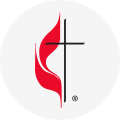What is it? C4C is a ministry that partners United Methodist Church congregations with local public elementary schools to help children and youth succeed in school and climb out of poverty toward a brighter future.
Who are the collaborating partners? The North Carolina Conference of the United Methodist Church, the Western North Carolina Conference of the United Methodist Church, the North Carolina Department of Public Instruction, and Communities in School of North Carolina. The initiative is supported by a grant from the Duke Endowment.
What was its genesis? The rejuvenation of school-church partnerships was first introduced collaboratively by Bishop Hope Morgan Ward and North Carolina Superintendent of Public Instruction June Atkinson at the 2013 NCCUMC Annual Conference. From there, a strategic plan was developed and field-tested to help all NCCUMC churches partner successfully with a local elementary school to serve the needs of children in poverty. C4C was formally introduced at the 2014 NCCUMC Annual Conference.
What are the areas of focus?
- Assist with improving K-3 literacy
- Provide basic resources to children (food, clothing, school supplies, etc.)
- Help to increase involvement of parents and other caring adults
- Raise awareness of poverty in NC
A related goal is to increase enthusiasm for missions, as well as the number of churches and church members engaged in mission in their local community.
Why do we need C4C? Many school-church partnerships already exist in silos across the conference (backpack buddies, prayer partners, clothing closets, school supply drives, etc.). C4C provides a field-tested model for developing intentional, sustainable partnerships based on the needs identified by each school’s leadership team. It helps organizations replicate success and use of best practices. It gets people over the “I don’t know where to start” hurdle. It provides structure for monitoring progress and measuring results. And with a common model, it allows churches to collaborate with each other for the benefit of all public school children in their communities.
How serious is the child poverty issue in NC? The 2010 school year was the first time in modern history where the majority of students in public schools in the South were low-income students as defined by those participating in free and reduced lunch programs. The percentage of NC children in poverty has increased from 19.9% in 2008 to 25.8% in 2012. One out of every four children in our public schools lives in poverty. The high poverty rate among students was not relegated to one geographic type or area, but was almost uniformly in urban, suburban, and rural environments.
How can congregations help? These are just a few suggestions of ways churches can assist local schools. Actual plans will be determined in cooperation with the school principal, based on his/her assessment of needs at that school.
Help improve K-3 literacy skills:
Book donations (Give 5, Read 5), reading tutors, summer reading
camps,after-school programs
Help provide for basic needs:
Food backpacks, clothing closets at schools, coat drives, school supply
drives,emergency family support
Increase involvement of parents and other caring adults:
Morning greeters, hall monitors, lunch buddies, Watch DOGS
If you would like to print or share this information, please use the attached pdf:
